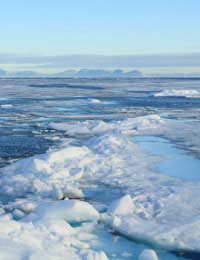The British Scientists Who Discovered the Ozone Hole

British Antarctic Survey Scientists Who Discovered The Ozone Hole
For more than half a century, the British Antarctic Survey has been taking measurements at the North Pole.
One of the world’s foremost environmental research organisations, it first began taking atmospheric readings in the Antarctic in the 1950s and in 1985, BAS scientists announced the discovery of the Ozone Hole.
Announcement That Changed The World
The researchers involved, Joe Farman, Brian Gardiner and Jonathan Shanklin, published their earth-shattering discovery in the journal, Nature, and it was instrumental in the introduction of the Montreal Protocol banning CFCs.Measurements at Halley station originally began in a bid to understand more about the way ozone absorbs solar energy and, according to rumour, the scientists believed their instruments were faulty when they first discovered the existence of the Ozone Hole.
Scientists in America say that NASA actually discovered the hole before the British Antarctic Survey but believed that its measurements must be incorrect, until they were confirmed by the Survey scientists.
British Antarctic Survey
Currently, more than 400 people work for BAS. It has three stations in the Antarctic, including Halley, as well as two stations on South Georgia.The present station at Halley is made up of a collection of buildings on steel legs, which have to be jacked up every year to keep them clear of snow. Four previous stations all had to be abandoned within a decade after being crushed by ice.
Despite the atrocious conditions, Halley is in operation all year round and is staffed by around 70 people in the summer and 16 in winter. However, very few of the winter staff are scientists – the main staff housed there are those with the technical skills needed to keep the station, its personnel and its experiments running, such as a doctor, mechanics, a cook and a heating engineer.
Darkness For Months
A major event in the Halley calendar is sundown, which marks the last day that the sun will rise over the horizon until winter ends. The base is then plunged into permanent darkness for more than 100 days until the sun eventually returns.Sundown is marked by various events and parties and, traditionally, the winter staff streak around the outside of the base (although they are allowed to wear a hat, gloves and boots).
Halley’s Excellent Location
The base at Halley is an excellent location for studying the atmosphere and ozone depletion, and it has provided an unbroken record of readings since the first data was gathered there in 1956.Its data is sent to forecasting stations to help with weather predictions, and Halley’s climate database is also used by researchers investigating climate change.
Southern Lights
Its position at the edge of the auroral zone, where the Southern Lights are visible in the winter sky, makes it an excellent location for research into Geospace – the region of space where the solar atmosphere interacts with the magnetic field of the Earth.
Following their discovery of the Ozone Hole, Farman, Gardiner and Shanklin received the Society of Chemical Industry (SCI) Environment Medal, reserved for those who have achieved the highest distinction in environmental science.


Re: What is Damaging the Ozone Layer
Wonderful information. Please wrote whether ultraviolet radiation are causing systemic sclerosis.
Re: What is Damaging the Ozone Layer
Hi... The given informations are really helpfull in my study. Thank you., let me ask one more thing What are the harmfull…
Re: The History of the Ozone Layer
do you have any links to resources on Charles Farby and Henri Buisson?? a furry is in need. thank you xd
Re: What Will Happen to Life on Earth if Ozone Depletion Continues?
You can't defy gravity, it's not possible as you could cause a rip in space time.…
Re: How Ozone Depletion will Affect Global Plant Life
I really love this article and its great for my research paper about the effects of ozone depletion on…
Re: What Will Happen to Life on Earth if Ozone Depletion Continues?
im usin this as homework help and it is very good so well done
Re: What is Damaging the Ozone Layer
To whoever wrote this article - Can you please write another article that tells everyone about, specifically, household…
Re: How Ozone Damage has Affected the Lives of People in Chile
What kind the paper I will need ,if I want to go tiwan please ,now I leave chili.
Re: Countries Most at Risk from Ozone Depletion
Nerada, The problem with your thinking that we are causing the ozone depletion is ignorant. It has been said…
Re: Countries Most at Risk from Ozone Depletion
Ozone depletion is real dude. Scientists from different countries with different political ideologies have all…